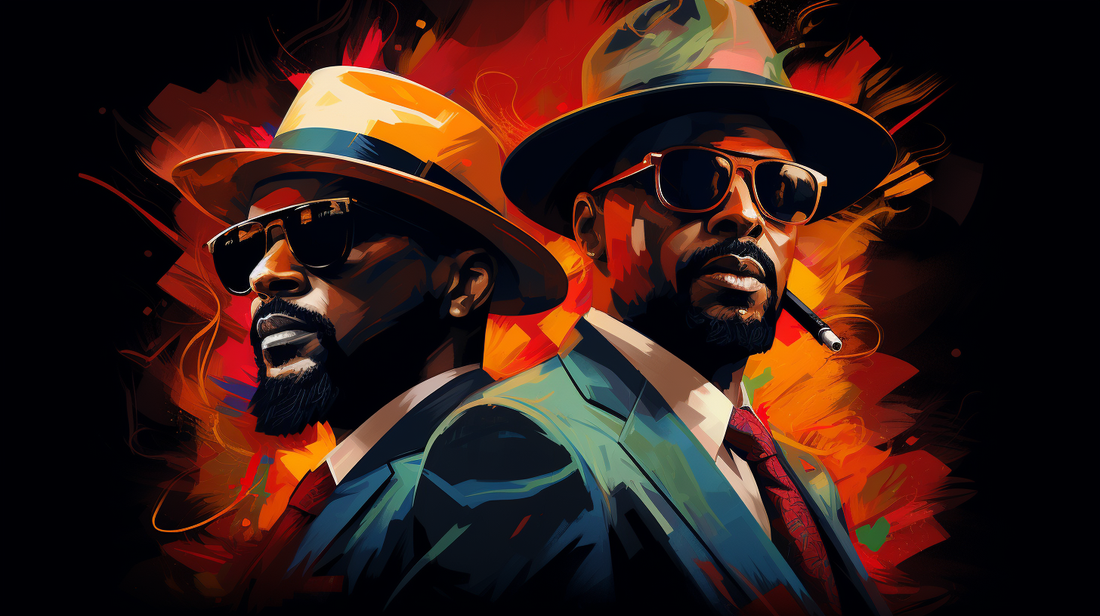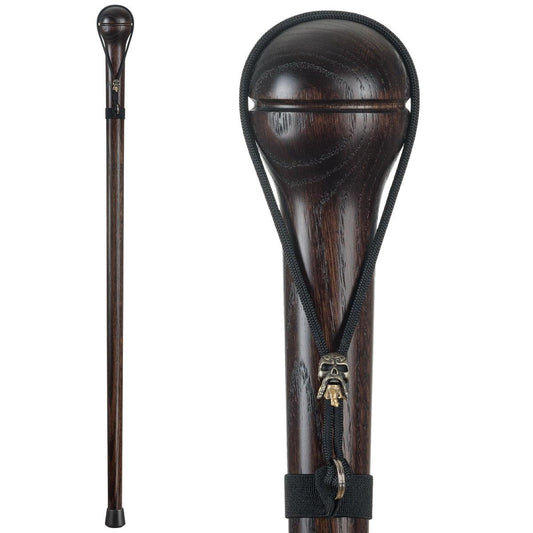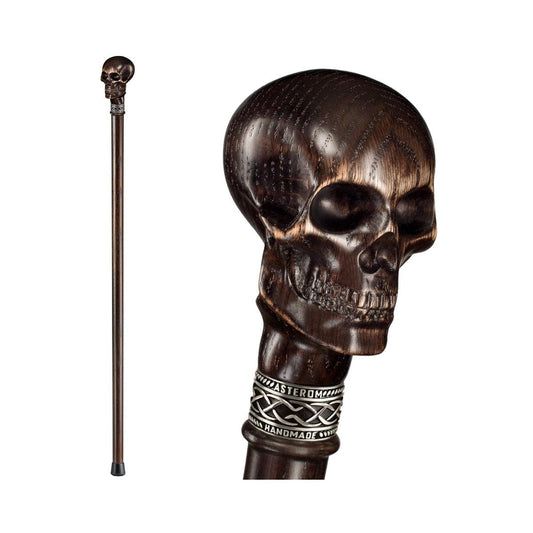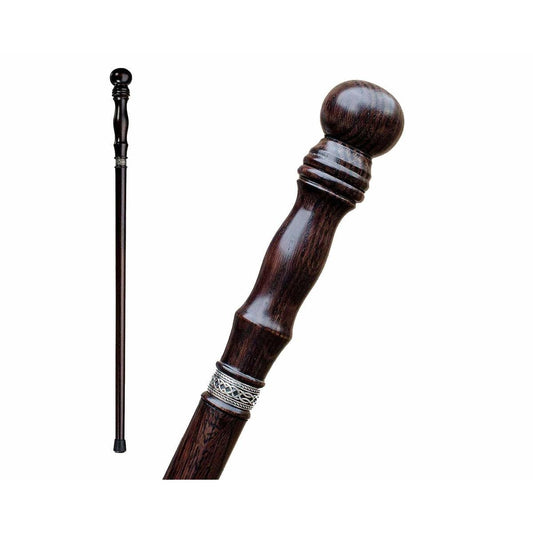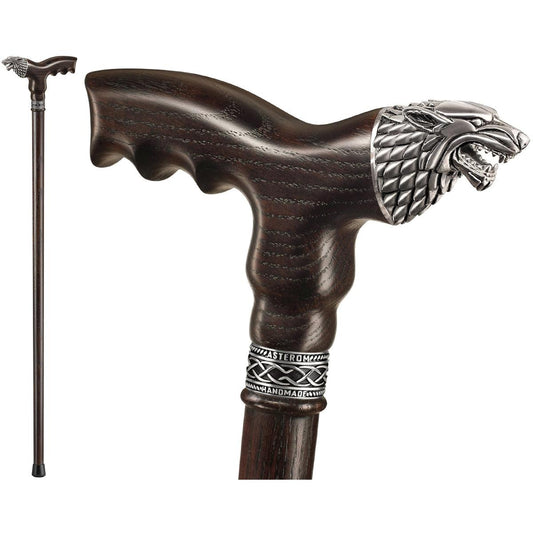Pimps have been a part of society for centuries, and their iconic canes are often associated with their flashy fashion and swagger. But what is the history behind these pimps and their canes?
See Our Complete Line Of Pimp Canes Here
A pimp, also known as a procurer or madam, is someone who manages or controls prostitutes in the sex industry. Dating back to ancient civilizations, the role of a pimp has existed in various forms, from providing protection and managing business affairs to exploiting and controlling sex workers.
The use of pimps can be traced back to the 17th century in Europe, where they were known as "panders" or "procuresses." During this time, pimps began to use canes as a way to display their status and power. These canes were often adorned with jewels, gold, or silver, and were seen as a symbol of wealth and authority.

The original purpose of the pimp's cane was practical, serving as a means of protection and support while walking on uneven streets or during altercations. However, as pimps began to use their canes to display their status and swagger, it became more of a fashion statement than a practical tool. Along with their canes, pimps also used other flashy accessories such as fur coats, wide-brimmed hats, and flashy jewelry to enhance their appearance and command attention.
But why do pimps feel the need to display such swagger? It can be argued that it is a way for them to assert their power and dominance in a society where they are often looked down upon. In popular culture, pimps are often depicted as suave and confident individuals, and their canes are a crucial part of this image.
However, the perception of pimps and their canes has evolved over time. In the past, they were seen as symbols of power and status, but in modern times, they are often associated with exploitation and violence. The glamorization of pimps and their canes in popular culture has also sparked controversy, with some arguing that it glorifies a dangerous and harmful lifestyle.
Despite the controversies, the pimp aesthetic has had a significant influence on fashion and pop culture. From traditional pimp attire to modern interpretations, this swagger has been adopted by artists, musicians, and fashion designers. However, it is essential to acknowledge the exploitative and violent history that is associated with pimps and their canes.
Key Takeaways:
What Is a Pimp and What Is Their Role?
A pimp is someone who manages and gains profit from the prostitution of others. Their responsibilities include controlling and exploiting sex workers, often through coercion, manipulation, and violence. Pimps act as intermediaries between sex workers and clients, arranging transactions and falsely providing protection. They maintain power over their "stable" of sex workers by instilling fear, dependence, and financial control. Pimps are widely criticized for their exploitative and harmful actions, contributing to the continuation of sex trafficking and the victimization of vulnerable individuals.
The History of Pimps and Their Canes
The rich and fascinating history of pimps and their canes dates back to the nineteenth century. These canes were not only a fashion accessory, but also a symbol of power and authority for pimps. Adorned with elaborate designs and materials such as gold and ivory, these canes were used to assert dominance and attract attention.
Today, pimps and their canes are often depicted in popular culture, showcasing their unique style and swagger. If you want to add a touch of vintage flair to your outfit, consider incorporating a stylish cane as an accessory.
What Was the Original Purpose of the Pimp's Cane?
The original purpose of the pimp's cane was to serve as a symbol of power and authority, enhancing their swagger and displaying their status within their community. It was not only a fashionable accessory, but also had practical uses such as providing support and stability while walking and serving as a potential weapon for self-defense. The pimp's cane has become synonymous with their image and has become an iconic symbol in popular culture.
However, over time, the perception of pimps and their canes has evolved and there have been controversies surrounding the glorification of the pimp lifestyle.

How Did Pimps Use Their Canes to Display Power and Status?
Pimps strategically used their canes to display power and status through the following steps:
- Choice of cane: Pimps carefully selected ornate and extravagant canes, often adorned with jewels or unique designs, to capture attention and convey their status.
- Confident posture: Pimps would walk with a swagger, holding their canes prominently to command respect and establish dominance.
- Gestural cues: Pimps utilized their canes as props to emphasize their words, pointing or gesturing with them to assert authority.
- Controlled movements: Pimps would skillfully spin or twirl their canes, showcasing their dexterity and confidence.
- Audience interaction: Pimps would occasionally tap their canes on the ground or objects, capturing attention and demonstrating their authority.
In the 1970s, legendary pimp and fashion influencer, Iceberg Slim, became famous for his iconic cane adorned with a diamond-studded handle. As he confidently strutted down the streets of Chicago, his cane became a symbol of power, evoking both fear and admiration from onlookers. People couldn't help but be captivated by his commanding presence, in part due to the way he expertly wielded his cane to display his status in the underworld.

What Other Accessories Did Pimps Use to Enhance Their Swagger?
Pimps utilized a variety of accessories to elevate their swagger and showcase their dominance and status. These accessories included:
- Elaborate hats adorned with feathers, jewels, or other decorative elements.
- Flashy jewelry such as gold chains, rings, and bracelets.
- Luxurious fur coats or other extravagant outerwear.
- Stylish shoes or boots with intricate designs.
- Canes with ornate handles, which not only served as a fashion statement but also as a symbol of authority.
These carefully selected accessories were instrumental in creating a unique and extravagant style that exuded wealth, confidence, and control.
Why Do Pimps Use Canes and Display Swagger?
Why Do Pimps Use Canes and Display Swagger?
Pimps use canes and display swagger for a multitude of reasons, including asserting dominance and projecting power. The cane serves as both a symbol of authority and a stylish accessory, enhancing their image. Swagger, characterized by confidence and flamboyance, is a means for pimps to establish control and draw attention. It aids them in standing out and intimidating others in their profession. Ultimately, the use of canes and swagger showcases the pimps' status and reinforces their reputation within their community.
Is It Just for Show or Does It Serve a Practical Purpose?
The pimp's cane serves both a practical purpose and is a symbol of power and status. It is not just for show. The cane provides support and stability while walking, especially in high-heeled shoes. Additionally, it can be used as a weapon for self-defense. However, the cane is also a fashion accessory that enhances the pimp's swagger and image. It represents authority and dominance in popular culture. Over time, the perception of pimps and their canes has changed, with more emphasis on the negative aspects of exploitation. Pro-tip: When using a cane for fashion, make sure it doesn't promote harmful stereotypes.
What Does the Pimp Cane Symbolize in Popular Culture?
The pimp cane has become a well-known symbol of power, dominance, and swagger in popular culture. It is often associated with extravagance and flamboyant style, and in movies, music, and fashion, it represents the larger-than-life persona of a pimp. The cane signifies control and authority over others, and its ornate design and embellishments only add to its symbolic value. However, it is important to acknowledge that the glorification of pimp culture can perpetuate harmful stereotypes and glamorize exploitation. By understanding the historical context and social implications of the pimp cane, we can gain a more nuanced perspective on its symbolism in popular culture.
The origin of the pimp cane can be traced back to the nineteenth century, where it was originally used as a practical tool by men of high social status. Over time, the cane evolved from a simple walking aid to a fashion statement, featuring intricate designs and precious materials. In the twentieth century, pimps adopted the cane as a symbol of their power and status. Through its portrayal in movies and music, the pimp cane became synonymous with a lavish lifestyle and control over women. However, in modern times, it is seen as a controversial symbol, representing both style and the exploitative nature of the pimp culture.
How Has the Perception of Pimps and Their Canes Changed over Time?
The perception of pimps and their canes has shifted over time, reflecting changes in societal attitudes and cultural norms. Here are the key transformations that have taken place:
- Historical stigma: Pimps were once viewed negatively and associated with exploitation and criminal activity.
- Pop culture influence: In the 1970s, movies and music glamorized the pimp image, portraying them as stylish and powerful.
- Shift in perception: In recent years, there has been a growing awareness of the dark side of the pimp lifestyle, shedding light on the exploitation and abuse involved.
- Symbol of empowerment: Some argue that pimps and their canes have been reappropriated by marginalized communities as symbols of resistance and empowerment.
- Continued controversy: The pimp image continues to be a subject of debate, with many condemning it as glorifying a harmful lifestyle.

The Evolution of Pimp Fashion and Swagger
Pimp fashion and swagger have transformed over time, reflecting the influence of different cultures and changes in society. In the 1920s, pimps sported flamboyant attire, such as fur coats, wide-brimmed hats, and flashy jewelry. The 1970s introduced the "superfly" style, featuring platform shoes, wide lapels, and bold colors. Today, pimp fashion takes on a more refined and understated look, with tailored suits and designer accessories. However, swagger remains a crucial element, exuding confidence and commanding attention.
To cultivate swagger, focus on developing your personal style, body language, and self-assurance. Embrace your uniqueness and project confidence wherever you go.
From Traditional Pimp Attire to Modern Interpretations
From Traditional Pimp Attire to Modern Interpretations
Traditional pimp attire has undergone a transformation into modern interpretations, reflecting the ever-changing cultural and fashion trends. The flamboyant and exaggerated style of traditional pimp fashion, characterized by fur coats, wide-brimmed hats, and flashy jewelry, has been reimagined and incorporated into contemporary fashion. Designers and artists draw inspiration from this bold aesthetic, incorporating elements such as oversized sunglasses, luxurious fabrics, and vibrant colors into their collections. This reinterpretation aims to celebrate the creativity and individualism associated with pimp fashion while also distancing itself from the exploitative and oppressive aspects. The modern interpretations provide a platform for self-expression and challenge conventional notions of style and identity.
How Has the Pimp Aesthetic Influenced Fashion and Pop Culture?
The pimp aesthetic has had a significant impact on fashion and pop culture throughout history. Here are some ways in which it has made an impact:
- Streetwear: The flashy and extravagant style of pimps has inspired streetwear brands, with elements like fur coats, oversized hats, and gold accessories becoming popular.
- Music: The flamboyance of pimps has been reflected in various music genres, from funk and disco to hip-hop and rap, with artists adopting their fashion sense and swagger.
- Film and TV: Pimps have been portrayed in numerous movies and TV shows, influencing fashion trends and shaping the perception of glamour and luxury.
- Street style: Pimp aesthetics have trickled down to everyday street style, with people incorporating bold colors, animal prints, and statement accessories to create eye-catching looks.
The pimp aesthetic has left an indelible mark on fashion and pop culture, shaping trends and inspiring individuals to embrace bold, expressive styles.
What Are the Controversies Surrounding the Pimp Image and Culture?
The controversies surrounding the pimp image and culture are centered around the exploitation and objectification of women. Critics argue that the glorification of the pimp image promotes a dangerous and harmful lifestyle, perpetuating harmful stereotypes and violence against women. It is seen as perpetuating a culture of misogyny and abuse, disregarding the well-being of those involved. The glorification of pimps in popular culture can also normalize harmful behavior and contribute to a culture that tolerates exploitation.
It is crucial to challenge and reject the glamorization of pimp culture and instead promote respect, equality, and empowerment for all individuals. Pro-tip: Show your support for organizations working to combat human trafficking and provide resources for victims.

Frequently Asked Questions
1. What is the origin of the stereotypical image of a pimp?
The stereotypical image of a pimp, wearing a brightly colored suit, a full brim feathered hat, gaudy jewelry, and carrying a cane, can be traced back to the 1970s Blaxploitation film genre. This image was popularized by media and is not an accurate representation of all pimps.
2. How did Hollywood glamorize the image of a pimp?
In the 1970s, Blaxploitation films portrayed pimps as flashy and flamboyant characters, often wearing brightly colored suits, full brim feathered hats, and carrying canes. This glamorized version of a pimp became a popular image in TV shows and movies, perpetuating stereotypes.
3. Is the stereotypical image of a pimp accurate?
No, the stereotypical image of a pimp is not entirely accurate. It is based on exaggerated and stereotypical depictions perpetuated by media. Pimps did not always dress in this manner and it is a result of Hollywood's glamorization of the profession.
4. What did pimps actually wear?
In reality, pimps often dressed in regular clothing and did not always display their wealth through flashy attire. The glamorization of pimps in media has been criticized for glorifying a profession that is often associated with exploitation and violence.
5. How has the portrayal of pimps in media changed over the years?
In recent years, there has been a shift towards more realistic portrayals of pimps in media. They are now shown as complex and flawed individuals rather than one-dimensional caricatures. This reflects a more accurate and nuanced understanding of the profession.
6. What is the role of public history in understanding the history of pimps?
The Portal for Public History is a platform where people can discuss and learn about various historical topics, including the history of pimps. By sharing accurate and nuanced information, it helps to dispel stereotypes and promote a better understanding of the topic.

